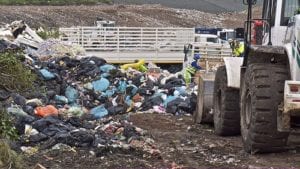A new method of integrated accounting and reporting will allow companies to place a monetary value on the environmental effects of their products, says professional services firm PwC. “A paradigm shift is required by companies in the way they currently do business and account for all costs and report to stakeholders. The importance of comprehensive stakeholder reporting has been brought to the fore in the wake of the recent economic uncertainty, social disparity and environmental degradation,” says Jayne Mammatt, an Associate Director within PwC’s Sustainability and Integrated Reporting Department.
There are signs that at least some institutions worldwide are taking the issue of sustainability reporting seriously. Sports and lifestyle firm Puma, with the support of PwC and Trucost, recently launched the results of its first product level Environmental Profit & Loss (EP&L) accounts, which place a monetary value on the environmental impact of products. “The accounting method is designed to give a better understanding of the environmental impact of the company and boost its competitive position in industry,” says Mammatt. Currently accounting practices do not provide recognition for the lost value of natural systems destroyed by the industry and as a result they are not protected by market forces. The results compare the environmental impact from cradle to grave of a conventional shoe and T-shirt with more suitable alternatives and illustrate how a sustainable approach to production reduces the impact on the environment by a third compared to conventional products. The analysis focused on the environmental effects caused by greenhouse gas emissions, waste and air pollution, as well as the use of natural resources such as water and land along the entire value chain from the generation of raw materials and production processes to the consumer phase when customers wash, dry, iron and finally dispose of the products.Mammatt says: “By putting a value on even one product’s environmental impacts, it brings into sharp focus the debates over commodity pricing, natural resource scarcity and supply. Even as an emerging methodology, it challenges conventional business thinking – and consumers’ views – on how we measure and monitor the embedded environmental value and impacts of what we buy.
She says that the EP&L accounting method is the way in which integrated reporting is likely to head in the future. Mammatt anticipates that companies in South Africa will follow suit, particularly in the light of stricter regulations, rising energy prices and widespread resource scarcity. “Although it’s a novel field for financial accounting, it is a significant step for companies,which is likely to be followed, given the requirements of the King III Report on Governance and the JSE Listing Requirements relating to integrated management and reporting.”







